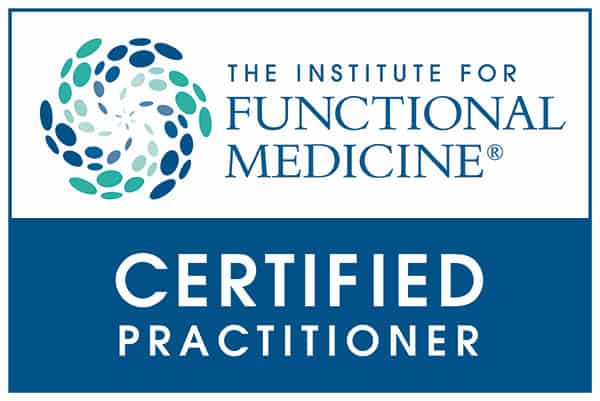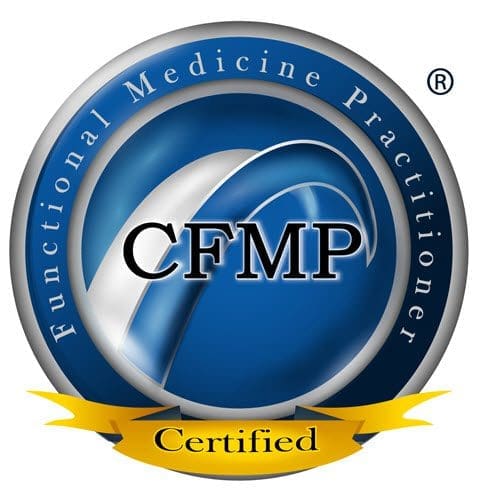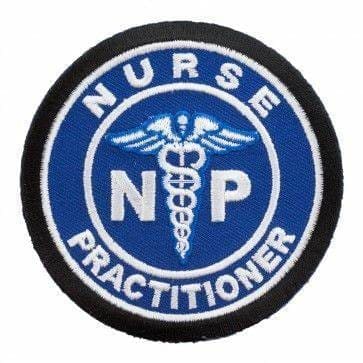Natural Health
Back Clinic Natural Health Functional Medicine Team. This is a natural approach to health care. It is a natural healing practice or a branch of alternative medicine that looks at nature for answers and explanations. There are a few Western forms of alternative medicine that NCCAM has classified as Biologically Based Therapies, as well as, Mind and Body Interventions used in stress management.
There is nothing magical about it. It is about natural healing therapies for prevention and healthy lifestyles. This means eating natural whole foods, nutritional supplements, physical exercise. This is nothing new, but it has evolved over the years within certain prevention parameters, and healthy lifestyles have proven to work repeatedly. There is nothing anti-intellectual or anti-scientific about it. All health, wellness, illness, and healing can be positively affected by simple and inexpensive natural therapies.
by Dr Alex Jimenez DC, APRN, FNP-BC, CFMP, IFMCP | Natural Health
Everyone’s heard that oysters can give lovers a boost in the bedroom, but a lot of foods can have the exact opposite effect.
“In general, eating unhealthily will lower your libido,” says Nashville-based sex therapist David Yarian. “You will have less energy and less vitality, and that translates into less sexual desire.”
Surprisingly, even some relatively healthy foods can deflate desire, most commonly by introducing compounds that alter the delicate balance between the sex hormones testosterone and estrogen. Here’s a list of foods to avoid on a romantic night:
Microwave popcorn. Few things can put you in the mood for love more than watching a good romantic movie in the privacy of your home theater and snuggling with your sweetheart in the dark. Just steer clear of that microwave popcorn. Microwave cooking bags contain the endocrine-disrupting chemical PFOA, which can leach into the popcorn. And messing with your hormones like that can definitely spoil a romantic evening.
Sugar. The sweet white demon is now being blamed for contributing to just about every chronic disease known to man. Now you can add sexual dysfunction to the list, according to the latest nutritional research. Besides rotting your teeth, weakening blood vessels, feeding cancer cells, and throwing blood chemistry out of whack, sugar produces belly fat. That, in turn, lowers testosterone levels, virility, and desire.
Artificial sweeteners. Don’t think you can get around the sugar issue by eating and drinking foods sweetened with chemicals. Aspartame, in particular, is thought to decrease levels of the “happy hormone” serotonin. Researchers have linked the sweetener used in NutraSweet and Equal to both a lowering of the libido and depression.
Deli meat. Here’s another food you should avoid for a variety of reasons, this one mainly due to its high content of salt, fat, and chemical preservatives called nitrates. Oddly enough, it’s the plastic used to wrap the meat that can put a crimp in your sex life. Most plastics contain PVC (polyvinylidene chloride), a chemical that can mimic estrogen, throwing hormones off kilter when it seeps into your baloney.
Dairy products. Cows are often given hormones to ramp up their milk production, and those hormones can wind up in the milk and anything made from it, including cheese, butter, yogurt, and ice cream. But you can still enjoy dairy. Just be sure to use products from cows with hormone-free diets. Organic, grass-fed is best.
Mint. Fresh breath may be conducive to intimacy, but lay off the peppermint and spearmint. Researchers have linked both to a drop in testosterone levels. You’re better off just brushing your teeth.
Soy. This legume is widely thought to be healthy because it has a lot of nutrients and a decent amount of protein for something from the vegetable kingdom. Studies show it also lowers cholesterol. On the dark side, soy contains isoflavones, compounds that have estrogenic qualities that can disrupt hormonal balance. Some studies claim soy reduces testosterone levels and sperm count. The evidence remains inconclusive, but why take chances if you have a hot date?
Beer. Sadly, the ubiquitous brew delivers a double-whammy to the libido. First, it contains alcohol, which is a depressant. Drink too much and it depresses desire in both sexes. Secondly, the hops used as a bittering agent in beer contain phytoestrogens similar to what’s in soybeans. The alcohol can also impede liver function, further fouling up the hormonal system.
In any case, sex therapist Yarian tells Newsmax Health that no single food is likely to make or break your love life.
“People are always looking for a quick fix to everything,” he says. “The truth is that healthy eating and getting enough exercise and sleep may be boring, but it has a cumulative effect. And that’s what will help your sexual function in the long term.”
by Dr Alex Jimenez DC, APRN, FNP-BC, CFMP, IFMCP | Natural Health
Antibiotics have saved untold millions of lives, but they do have a cost. Along with killing healthy cells together with the bacteria that cause infections, antibiotics used in high amounts for extended periods spur the creation of “superbugs” that become immune to antibiotics.
Now, Canadian researchers have found that the sweet syrup you pour over waffles may hold the key to eliminating the creation of antibiotic-resistant superbugs.
“Native populations in Canada have long used maple syrup to fight infections,” says Nathalie Tufenkji, Ph.D.
Tufenkji became interested in the disease-fighting properties of maple syrup when she found that phenols in the syrup had antiseptic properties.
Phenols are toxic compounds in the syrup that are both antiseptic, which kills infections on living tissues, and disinfectant, which destroys bacteria on nonliving objects.
Tufenkji’s team at McGill University separated the sugar and water from the syrup’s phenolic compounds. When they exposed several disease-causing bacterial strains to the extract, they didn’t see much of an effect.
They then decided to check whether the extract could enhance the antimicrobial potency of the commonly used antibiotics ciprofloxacin and carbenicillin.
When the team mixed the phenolic extract with either of these medicines, they indeed found a synergistic effect, allowing them to get the same antimicrobial effect with upwards of 90 percent less antibiotic.
The method worked on a variety of bacterial strains, including E. coli, which can cause gastrointestinal problems; Proteus mirabilis, responsible for many urinary tract infections; and Pseudomonas aeruginosa, which can cause infections often acquired by patients in hospitals.
They found that the extract increased the permeability of the bacteria, suggesting that it helps antibiotics gain access to the interior of bacterial cells. Another experiment suggested that the extract may work by a second mechanism as well, disabling the bacterial pump that normally removes antibiotics from these cells.
While it will probably be years before the extract will be available as a medicine, it may have an edge over other medications that may be developed in the future. “There are other products out there that boost antibiotic strength, but this may be the only one that comes from nature,” Tufenkji said.
A British folk medicinal recipe has also been found to be effective against superbugs. Scientists at the University of Nottingham found that an ancient eye salve kills the deadly antibiotic resistant superbug Methicillin-resistant Staphylococcus aureus (MRSA).
Experts recreated the salve, which was described in the 9th Century Anglo-Saxon manuscript Bald’s Leechbook, using onion, garlic, and wine, all long-known for their antibacterial properties, as well as cow bile. Results of tests, both in vitro and on mice, were “astonishing,” and killed up to 90 percent of the MRSA.
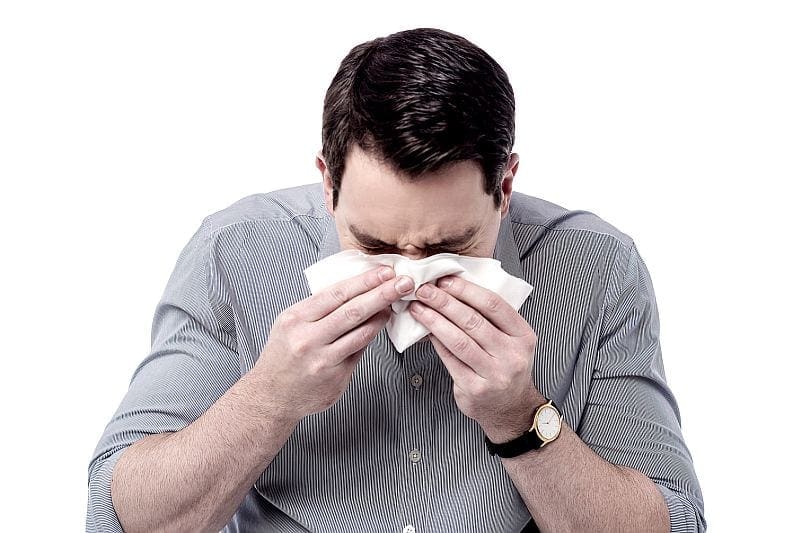
by Dr Alex Jimenez DC, APRN, FNP-BC, CFMP, IFMCP | Holistic Medicine, Natural Health
Do you have the sniffles? Are your eyes watering? If so, you may be a victim of spring’s abundance of pollen that’s triggering your runny nose and watery eyes. A warm February caused trees and plants to bloom early, with many blossoming a full month ahead of schedule, allowing for a longer pollen season. As a result, experts say we’re in for a monster of an allergy season.
Before you blame your misery on pollen, however, make sure you don’t have a cold instead. Symptoms of both allergies and colds include stuffy noses, post-nasal drip, and headaches, but if you have fever, muscle aches, and a loud, violent cough, you probably have a cold. Also, if you’ve been suffering for more than about two weeks, you can place the blame on seasonal allergies, which typically last two or more months.
Although you can’t escape pollen, you can use these 10 tips to minimize your exposure:
• Stay indoors during peak pollen times — usually between 10 a.m. and 4 p.m., according to the American Academy of Allergy, Asthma & Immunology.
• Keep pollen from entering your home by keeping doors and windows shut, and don’t use fans that will bring in pollen-bearing air.
• Run air conditioning or air cleaning systems to remove allergens from indoor air. Use high-efficiency filters (HEPA) for best results, but replace them regularly or they become a breeding ground for bacteria.
• When gardening, wear a mask to reduce breathing in pollen and mold, and wash your face and hands when you come inside.
• Shower and wash your hair at night instead of in the morning to remove the pollen your body has collected during the day.
• Keep car windows closed.
• Monitor pets. If your indoor pets go outside, keep them off furniture and bathe them frequently to reduce the pollen they bring inside.
• Wear sunglasses to help shield your eyes from pollen.
• Watch your diet. Certain foods can make your seasonal allergies worse. Those allergic to ragweed could have problems with bananas, melons, zucchini, cucumber, and chamomile tea.
• Use salt lamps. Salt lamps are made from a chunk of salt that has been hollowed out to make room for a small light bulb or candle. Heating the salt produces negative ions which help purify the air of pollen, dust, and other pollutants.
You can also use these five natural remedies to fight the symptoms of allergies:
• Probiotics. An analysis of 23 randomized studies at Vanderbilt University Medical Center found that probiotics, the “good” bacteria found in yogurt, improved the symptoms of people with seasonal allergies, such as sneezing and a stuffy nose, in 17 of the studies. Researchers theorize probiotics change the composition of bacteria in the intestines in ways that modulate the body’s immune response and stop it from reacting to pollen and other allergens.
• Butterbur. A Swiss study published in the British Medical Journal found that one tablet four times a day (32 mg total) of this European herb relieved hay fever symptoms as effectively as the drug cetirizine, the active component of Zyrtec, with none of the drowsiness. Another study compared butterbur to Allegra with similar results. (Caution: Do not combine a drug for allergy relief with butterbur — you may overdose.)
• Quercetin. An antioxidant found in many fruits and vegetables, including apples and onions, quercetin acts as an anti-inflammatory that helps ease allergic symptoms. A double-blind, placebo-controlled Japanese study found that taking quercetin daily for eight weeks significantly reduced itching and irritation of the eyes in people with pollen allergies. Other research has found that quercetin reduces the amount of histamine produced by and released from cells.
• Stinging nettle. In a double-blind trial published in Planta Medica, 57 percent of patients found the herb was better at reducing the sneezes and sniffles of allergy than a placebo. Researchers believe the herb reduces the amount of histamine the body produces in response to an allergen, such as pollen.
• Acupuncture. A study published in the American Journal of Chinese Medicine found that acupuncture reduced the hay fever symptoms of all study participants. Another study found that acupuncture eliminated allergy symptoms in more than half of participants after only two treatments.
Of course, you can always take over-the-counter non-sedating antihistamines, such as Allegra, Claritin or Zyrtec Take them 30 minutes before going outside.
If your misery doesn’t ease or if your symptoms worsen, see your doctor. Physicians can prescribe cortisone nasal sprays, and immunotherapy in the form of shots or drops under the tongue may be prescribed for those with the most severe symptoms.
by Dr Alex Jimenez DC, APRN, FNP-BC, CFMP, IFMCP | Natural Health
Adults who become overweight or obese have a higher risk of dying from heart disease, cancer or other illnesses, a new study suggests.
Further, the risk of dying increases in proportion to the amount of excess weight you gain, the researchers found.
The results undercut the so-called “obesity paradox” — a theory that obesity could protect the health of some people and even give them a survival advantage, said senior study author Andrew Stokes. He’s an assistant professor of global health with the Boston University School of Public Health.
In the study, Stokes and his colleagues tracked the weight history of more than 225,000 participants in three large studies, gauging the maximum body mass index (BMI) of each person across an average of 16 years.
“We found that after considering weight history, the apparent paradoxical association between overweight/obesity and the risk of dying completely disappeared,” Stokes said.
Morbidly obese people were twice as likely to die from any cause, more than three times as likely to die from heart disease, and 50 percent more likely to die from cancer compared with normal-weight folks, researchers concluded.
Previous studies with results supporting the obesity paradox have only checked participants’ BMI at one point in time, producing a weight “snapshot” that might not reflect the person’s actual excess pounds over their lifetime, Stokes said.
This can bias the results, when you consider that many people with a fatal illness frequently lose a lot of weight prior to death, he said.
“Some people have unintentional weight loss driven by the onset of a chronic disease like cancer or a heart condition,” Stokes said. “When you just consider the snapshot, some people in the normal-weight category are those who developed a disease and are losing weight on the pathway to dying. That acts as a bias.”
Tracking the subjects’ weight every couple of years via questionnaires, researchers were able to categorize them based on the highest BMI they reached during the study period — underweight (less than 18.5 BMI), normal weight (18.5-25 BMI), overweight (25-30 BMI), obese (30-35 BMI) and morbidly obese (greater than 35 BMI).
They then tracked participants an average of 12 years, noting which ones died and the cause of their deaths.
A person’s overall risk of dying increased based on their maximum BMI, the researchers found: 10 percent increased risk for overweight people, 34 percent for the obese and 98 percent for the morbidly obese.
The same sliding scale held for risk of death from heart disease (23 percent increased risk for overweight people, 71 percent increased risk for the obese and more than triple for the morbidly obese) and cancer (5 percent for overweight, 20 percent for obese and 50 percent for morbidly obese).
Underweight people also had an increased overall risk of death (46 percent) and death by heart disease (77 percent) or cancer (7 percent).
However, the study cannot prove that the additional weight caused the increased death risk, and it can’t say whether or not losing the weight would reduce the extra risk, Stokes added.
“That’s a really important question, and it’s a question I aim to address in future research,” Stokes said. “In this paper, we have not distinguished between intentional and unintentional weight loss. We cannot say anything at this point about whether having a history of overweight and obesity sticks with you even after you lose the weight through lifestyle change.”
Dr. Scott Kahan, director of the National Center for Weight and Wellness in Washington, D.C., said he’s not surprised that the obesity paradox does not appear to stand up to close scrutiny.
“We have no biologically plausible reason to think that carrying excess weight would be protective in any way,” Kahan said, noting that extra pounds place added stress on the body while larger fat cells produce harmful inflammatory chemicals and hormones.
At the same time, Kahan thinks ultimately it will be proven that overweight and obese people could reduce their risk by losing weight.
“Many, many other studies have shown that even moderate weight loss leads to improvement of a wide range of health problems,” said Kahan, a spokesman for The Obesity Society.
Stokes agreed. “We have quite compelling evidence from trials of bariatric surgery that weight loss is hugely beneficial in reducing your risk of disease or dying,” he said.
The study was published in the April 3 issue of the Annals of Internal Medicine.
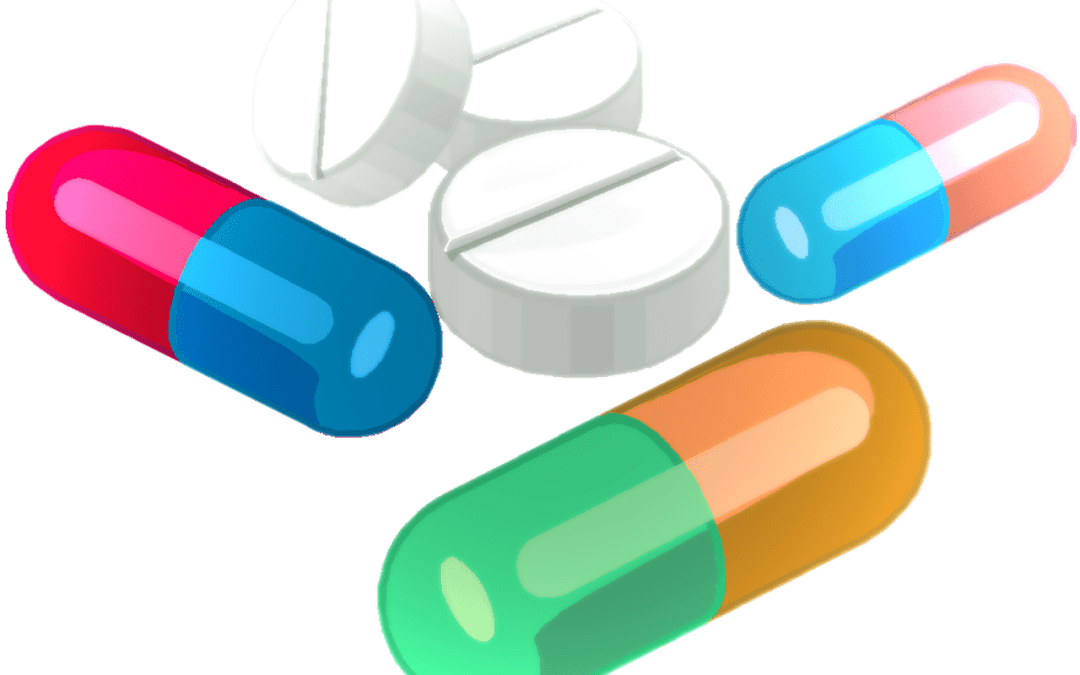
by Dr Alex Jimenez DC, APRN, FNP-BC, CFMP, IFMCP | Gut and Intestinal Health, Natural Health
Using antibiotics very early in life may lead to developing inflammatory diseases later in life, says a new report published in the Journal of Leukocyte Biology. Using antibiotics in infancy disrupts the normal development and growth of gut bacteria, and in addition to contributing to gut problems such as inflammatory bowel disease (IBD), the altered environment may contribute to other inflammatory diseases such as asthma and multiple sclerosis.
The study also indicates that altering gut bacteria may be a way to treat or prevent some inflammatory diseases.
“Our study demonstrates that gut bacteria in early life do affect disease development in adulthood, but this response can be changed,” said Colby Zaph of the School of Biomedical Sciences at Monash University, Australia.
The study has important ramifications for using pre- and probiotics, in the administration of antibiotics to newborns, and to the understanding of how gut bacteria play a critical role in the development of inflammatory diseases such as IBD.
For the study, scientists used two groups of mice. The first group included pregnant females treated with broad spectrum antibiotics during pregnancy and pups treated with broad spectrum antibiotics for the first three weeks of life.
The second group was a control group that consisted of untreated pregnant mothers and pups. The pups in the treated group were weaned at three weeks of age and antibiotic treatment was stopped at the same time. These pups had reduced levels of gut bacteria and were allowed to age normally.
At eight weeks of age, immune cells (CD4 T cells) from both the treated and untreated pups were examined for their ability to induce irritable bowel disease in other mice. The immune cells from antibiotic-treated mice induced a more rapid and more severe disease than those from the untreated mice.
Another recent study connected Gulf War Illness (GWI) to changes in gut bacteria. Researchers found that the chemicals, etc. that veterans were exposed to altered the microbiome — the bacteria that inhabit the gut. The affected microbiota then produce endotoxins, which pass through a thinned lining of the gut (called a leaky gut) and into the blood where they circulate throughout the body.
These compounds trigger an inflammatory response that, in turn, initiates several neurological abnormalities commonly observed in GWI, such as cognitive difficulties, widespread pain, and debilitating fatigue.
by Dr Alex Jimenez DC, APRN, FNP-BC, CFMP, IFMCP | Natural Health
We’re in the middle of a drug-addiction epidemic in the United States, and increasing numbers of overdoses — and fatalities — have a lot of people worried. Many addicts are in and out of treatment centers and go right back to drugs and alcohol.
But Recovery Unplugged Treatment Centers have been reporting remarkable success using an innovative form of music therapy to treat addiction and help recovery.
Only about 7 percent of clients leave the centers’ facilities in Fort Lauderdale and Austin before completing treatment programs, according to Paul Pellinger, certified addictions counselor. The national average, he says, is 42-45 percent.
Richie Supa, famed songwriter and director of creative recovery at Recovery Unplugged, says the key to the organization’s success rate is the way the program uses music to speed recovery from addiction.
“Music does several things to the brain and the body,” Supa explains. “Everybody likes music and the lyrics. We didn’t invent the wheel, but applied it to addiction recovery.”
Pellinger explains that a growing body of evidence suggests music has unique and powerful impacts on the brain — not unlike the effects of drugs. Researchers have found it can ease depression and combat Alzheimer’s disease symptoms.
Studies have even shown listening to music fires endorphins — neurotransmitters generated in the brain’s pleasure centers — which can generate feelings of euphoria during exercise and other activities in ways comparable to exercise and psycho-pharmaceuticals.
“There is science behind music [impacts],” Pellinger says. “It lights up the brain like a hit of cocaine.
The center’s use of music starts before the client even arrives, Pellinger explains, and when they leave it goes with them.
Interviews conducted before arrival help the center to pinpoint a client’s music interests. When they are picked up by a driver, their favorite music is magically playing in the vehicle. When they leave treatment, they go with an MP3 player and earbuds.
“Focusing on consequences doesn’t really help an addict,” Pellinger says. “We need to communicate to the soul, not the head.”
The center’s success, Pellinger says, is based on several key principles. First of all, music helps to establish rapport with clients.
“If you don’t have this, you’re not going anywhere,” he says. “If they are still having trouble expressing ideas, there is probably a song about it. This provides engagement for them to start thinking and talking. Once we get them to talk about ‘their truth,’ I can help them re-frame it and normalize feelings.”
“We also use music as an anchor to help people remember things,” Pellinger said. “If I asked you what you had for lunch yesterday, you probably couldn’t tell me, but you could probably tell me what your favorite songs were years ago. This helps clients associate and remember.”
One of Richie Supa’s songs, “I’ve got this,” refers to the tendency of addicts and drunks to shrug off help. Former clients have talked about remembering those lyrics and being able to change behaviors. Clinicians are taught to communicate to the head, but music helps people remember what they need to do to stay sober.
The vibrations of music are also important in recovery. “People in post acute withdrawal are jumpy and have aching bones. The vibration of music penetrates the body and acts as a calming factor. Vibrations are equally as effective as Xanax if you let it work for you,” Pellinger says.
Eighty-five percent of the clients who treated by Recovery Unplugged are not musically trained, Pellinger says, but everyone still responds to music.
Supa’s involvement in Recovery Unplugged came after 26 years as a drug addict. When he went into recovery in 1988, he started writing a song called “Amazing” for Aerosmith.
The huge success of this song helped Supa see that he had done much more than write a good song. “Amazing” reached a lot of people who needed help, he says.
“People tell me that this song saved their lives. That planted a seed way back then,” Supa notes. “I know the dark side and I know walking out of the shadows into the sunlight. My new album, ‘Enemy,’ touches on all the emotions.”
Supa had been playing at detox centers before Recovery Unplugged, and started to see emotional responses to his music.
“I knew I was making a connection,” he says. He developed a one-man show called “Recovery Unplugged,” and when he met Pellinger, who has been an addictions counselor for 29 years, they knew they were on the same page.
Pellinger’s treatment center, then named “Harmony,” was renamed Recovery Unplugged and Supa became director of creative recovery.
“We got amazing results with music,” Supa says. “We allow clients to sing along and it provides a sense of unity. Music is non-threatening and when I deliver a message the clients don’t sit with their hands across their chest. There is no psycho-babble.”
Supa has invited his friend Aerosmith singer Steven Tyler, among other musicians, to participate in programs at Recovery Unplugged.
One former client, 2 ½ years clean, is Doug Tibbs, also a musician.
“All the stories are similar,” Tibbs says. “You come to a fork in the road and you are going to die, or you’re going to get your life back.”
At Recovery Unplugged, Tibbs played with Supa twice a week.
“I had been in other places that were like hospitals, and Recovery Unplugged was the complete opposite,” he notes.
“Music is universal,” Tibbs says.
Supa agrees.
“The greatest thrill for me is when a parent hugs me and says thanks for getting my kid back,” Supa adds. “If you want to find yourself, lose yourself in helping other people. This is a rebirth for me.”
For more information about Recovery Unplugged: 954-703-6152.
by Dr Alex Jimenez DC, APRN, FNP-BC, CFMP, IFMCP | Natural Health
A common virus in infancy could trigger a life-long allergy to gluten and lead to celiac disease, an autoimmune disorder which affects one in 133 people in the United States, researchers said Thursday.
Celiac disease is caused when the body has an improper immune response — much like an allergy — to the protein gluten, found in wheat, rye, and barley.
The disease damages the lining of the small intestine, and has no cure. It can only be treated by adopting a gluten-free diet.
But if Thursday’s study in the journal Science — based on experiments using mice — is confirmed in larger studies in people, researchers said a vaccine might be able to prevent celiac disease in the future.
“This study clearly shows that a virus that is not clinically symptomatic can still do bad things to the immune system and set the stage for an autoimmune disorder, and for celiac disease in particular,” said senior author Bana Jabri, director of research at the University of Chicago Celiac Disease Center.
The study found that intestinal bugs called reoviruses can make the immune system overreact to gluten, a protein that is already difficult to digest.
Given to mice, “one common human reovirus triggered an inflammatory immune response and the loss of oral tolerance to gluten, while another closely related but genetically different strain did not,” said the study.
The virus led to a surge in antibodies that may leave a “permanent mark on the immune system that sets the stage for a later autoimmune response to gluten.”
Most infants eat their first gluten-containing cereals around six months of age, a time when their immune systems are more vulnerable to viruses.
“During the first year of life, the immune system is still maturing, so for a child with a particular genetic background, getting a particular virus at that time can leave a kind of scar that then has long-term consequences,” Jabri said.
“That’s why we believe that once we have more studies, we may want to think about whether children at high risk of developing celiac disease should be vaccinated.”
Co-authors of the study were from the University of Pittsburgh School of Medicine; the University of Naples, Italy; Erasmus University Medical Center in Rotterdam, Netherlands; Massachusetts General Hospital; Harvard Medical School; the Broad Institute at MIT; the University of Montreal; and Stanford University.





